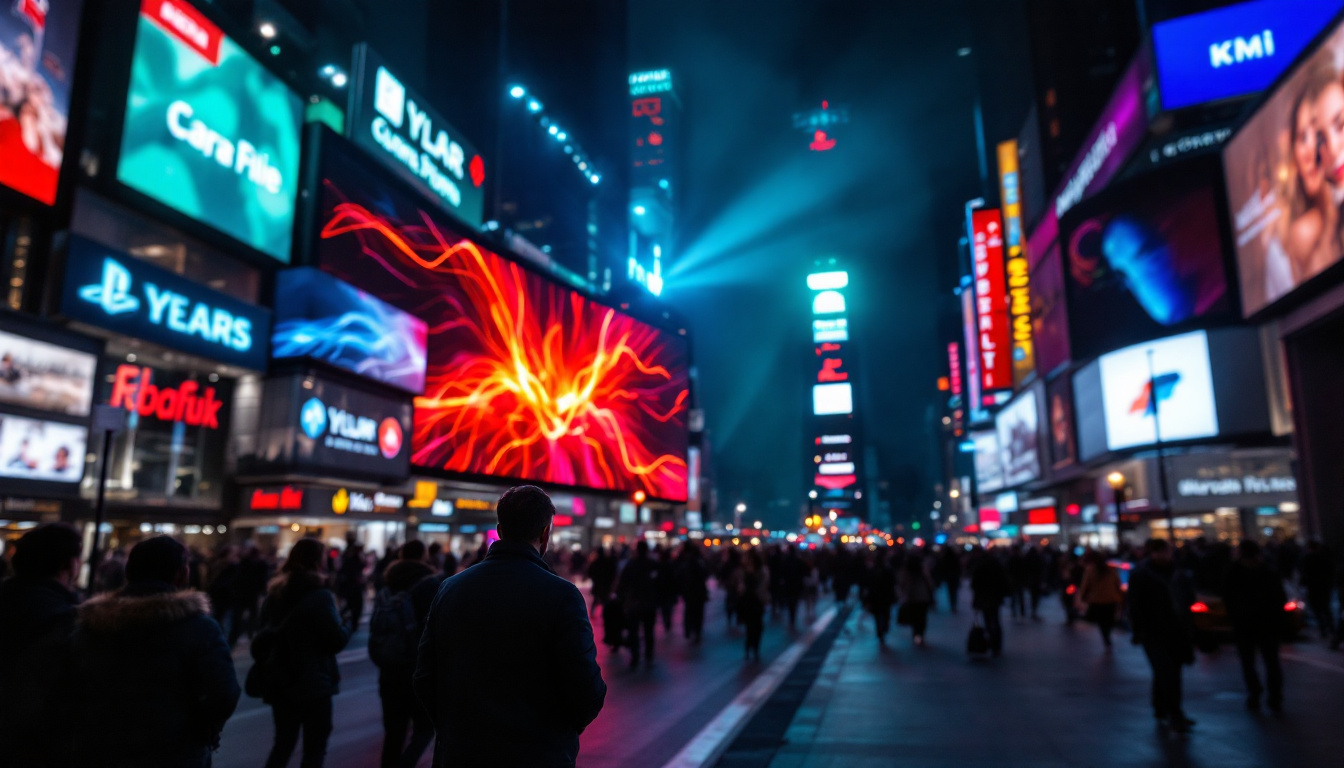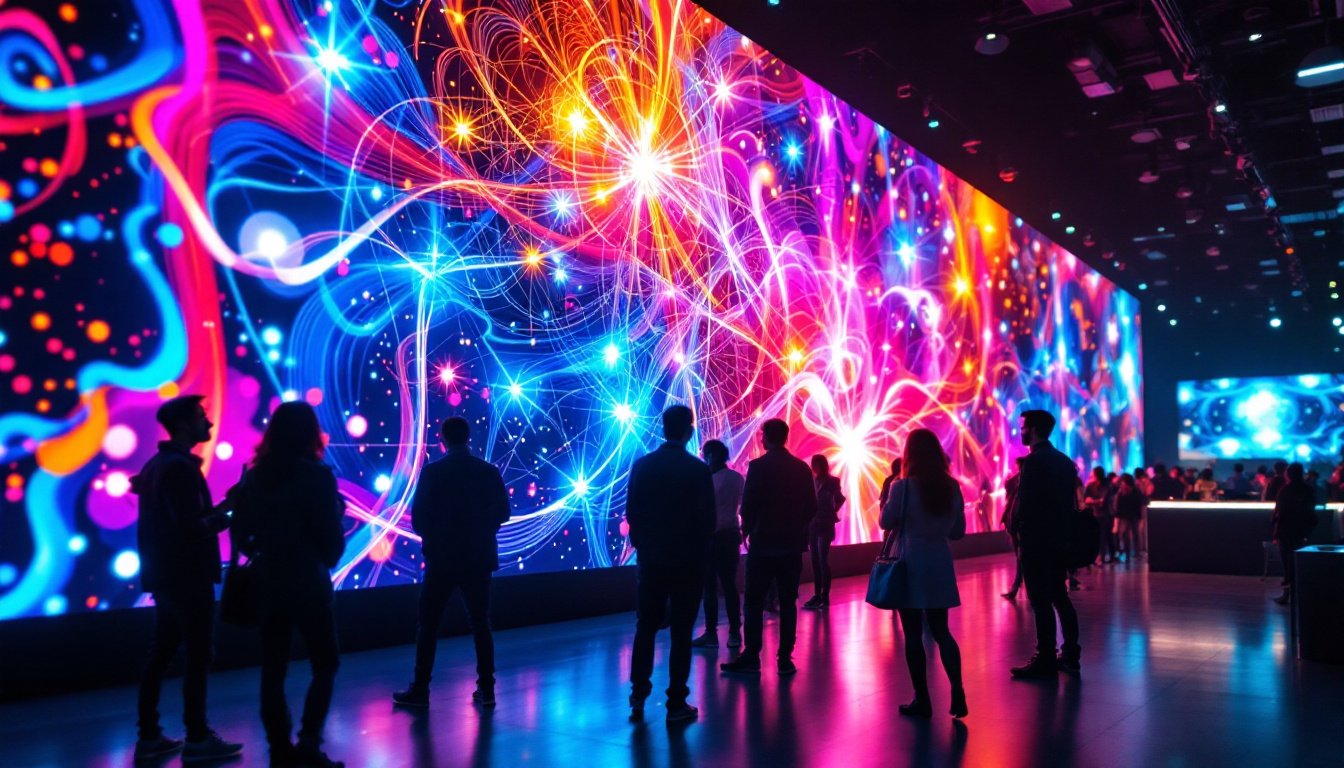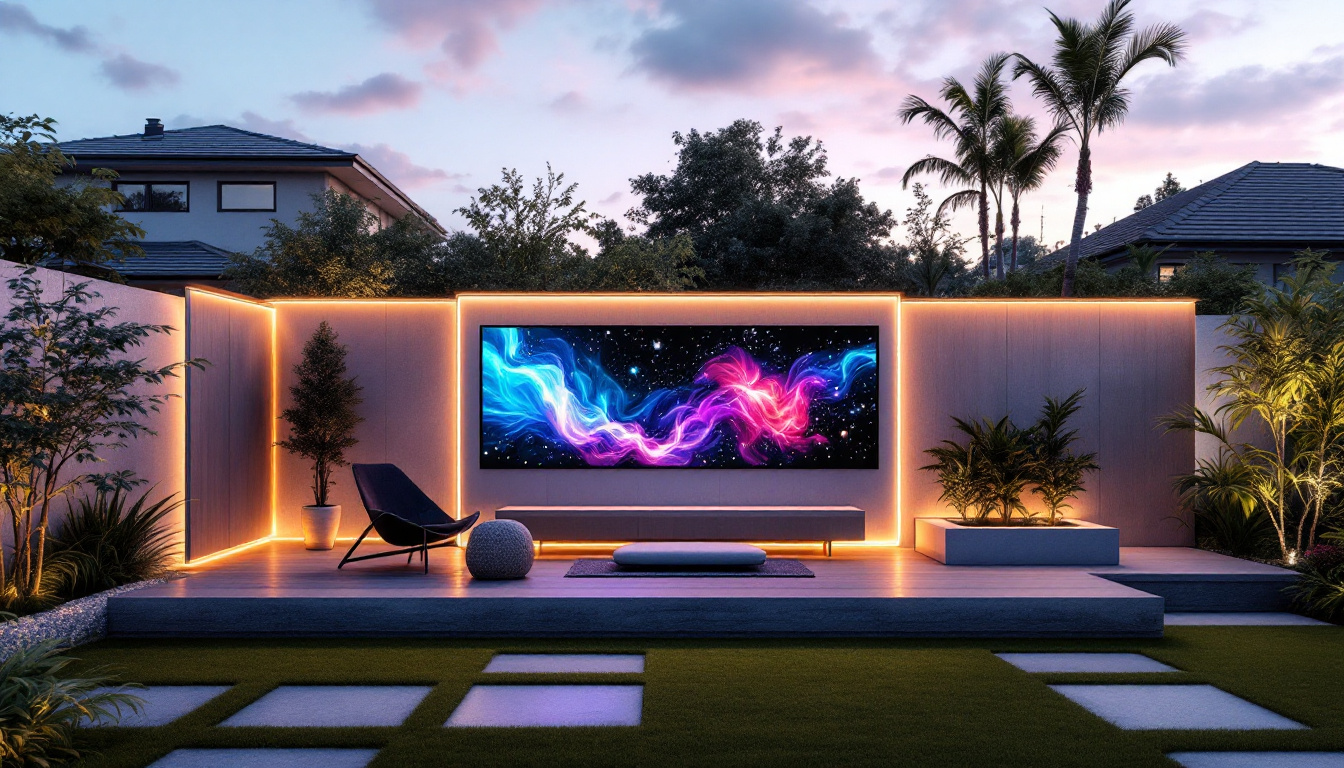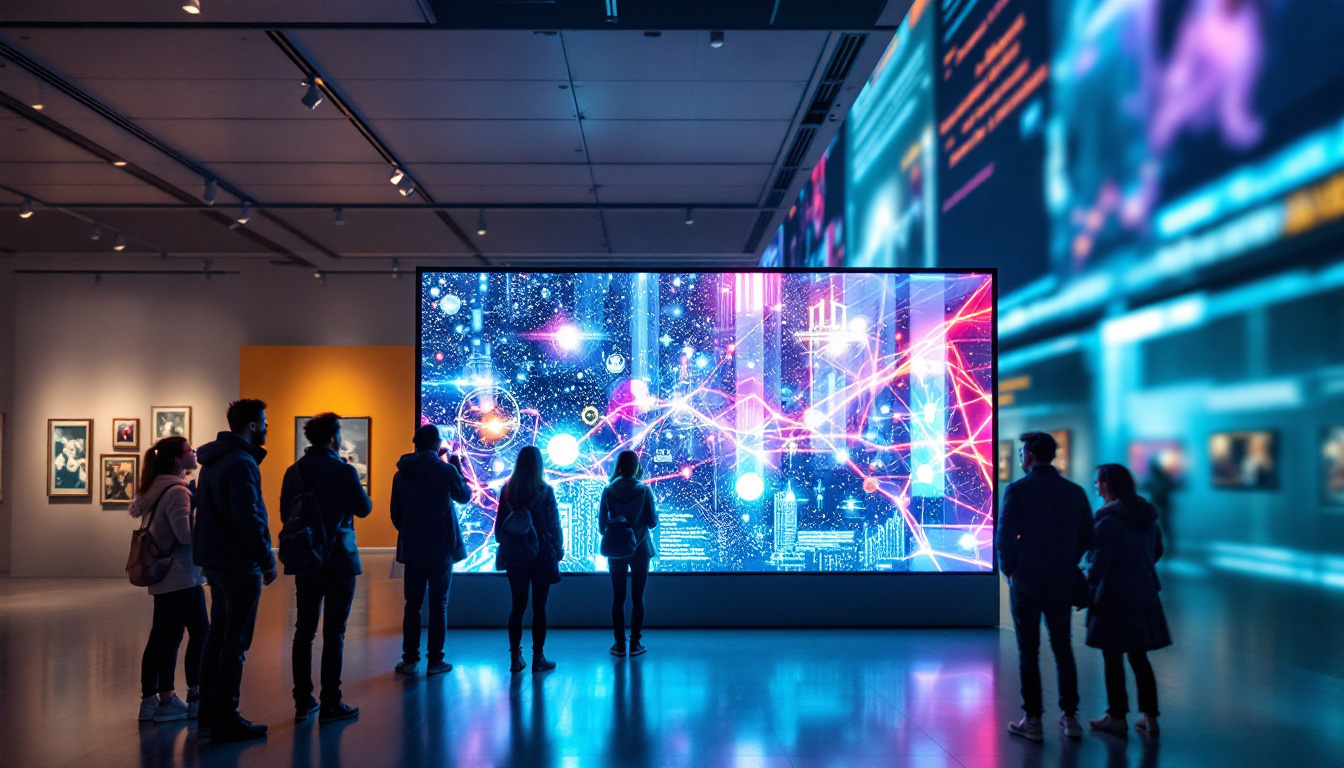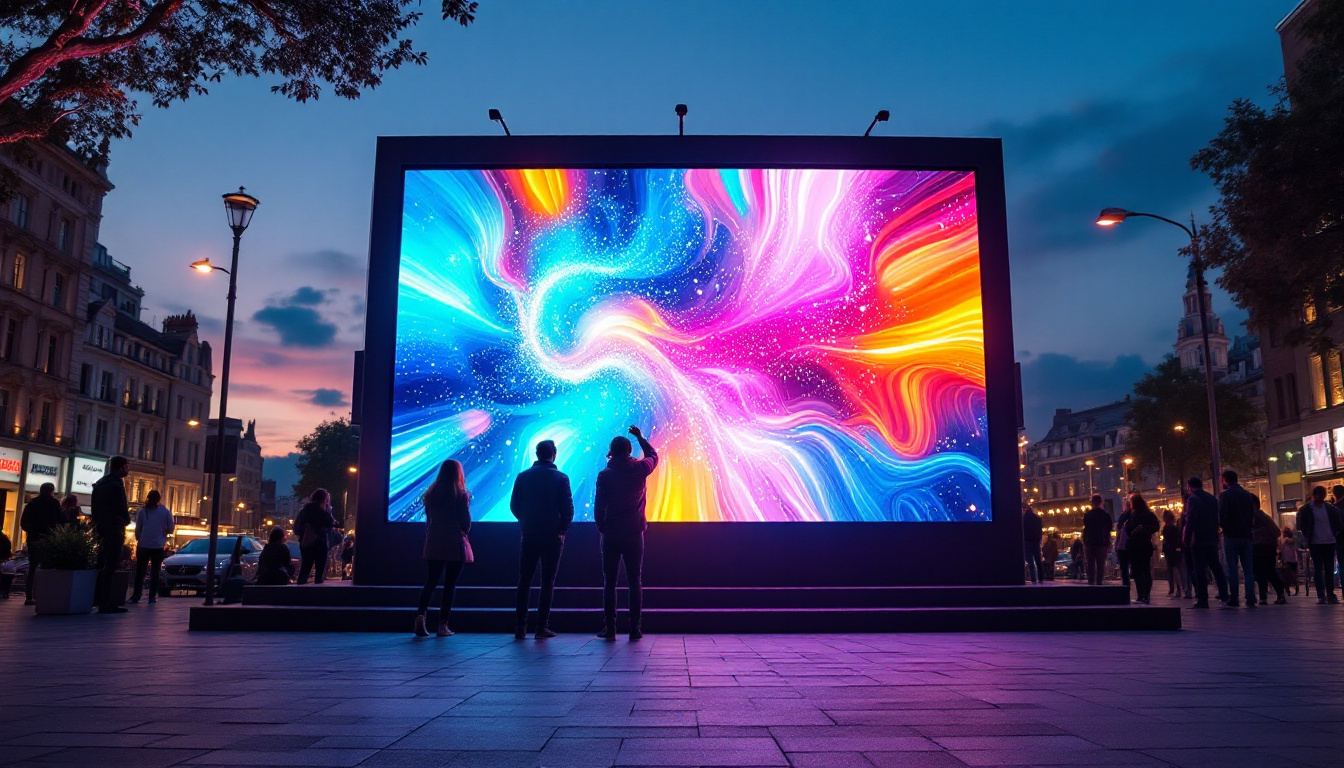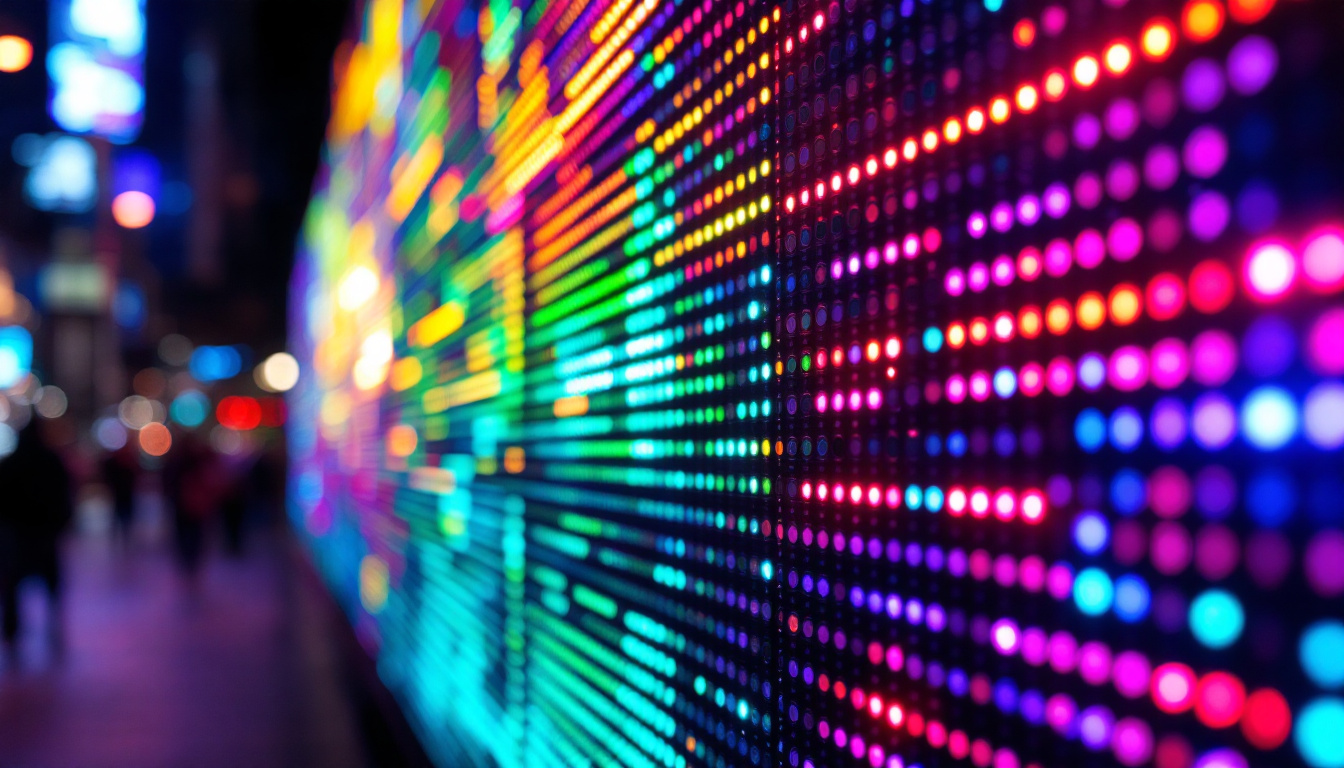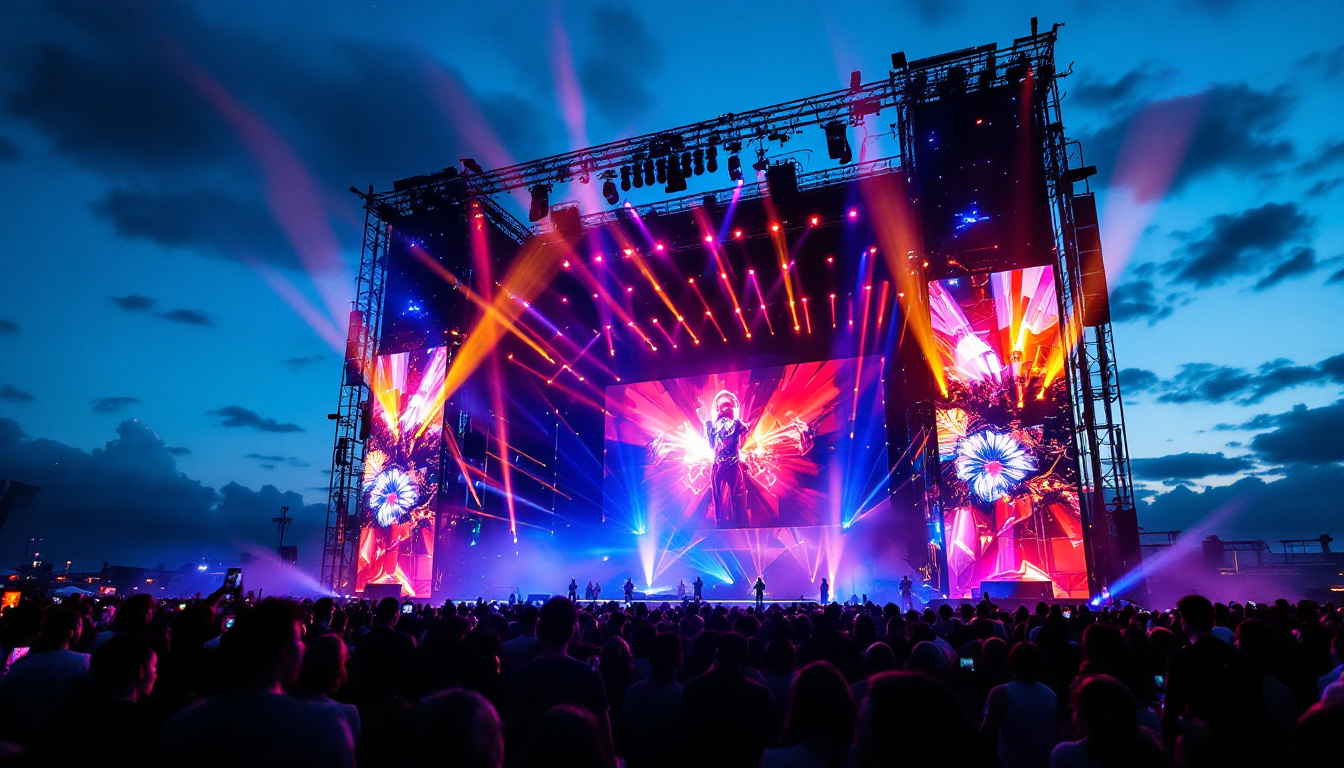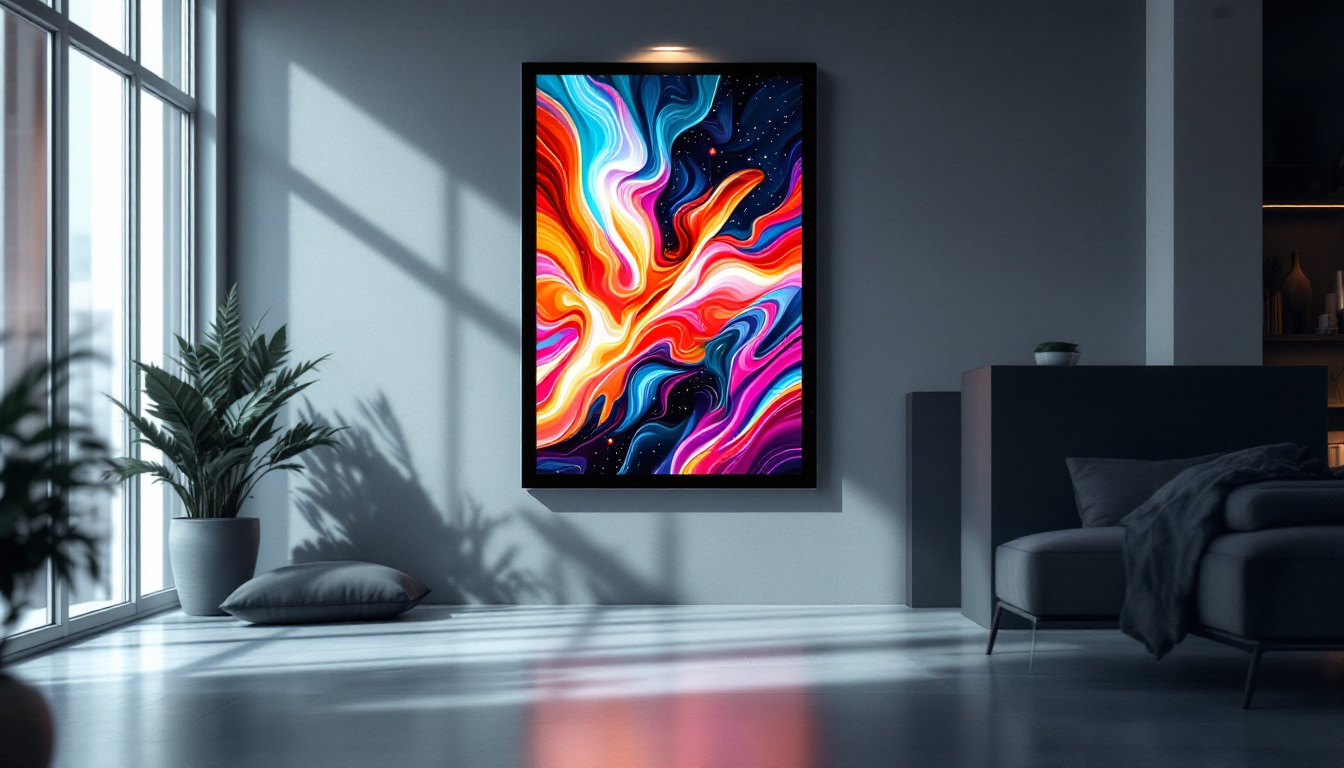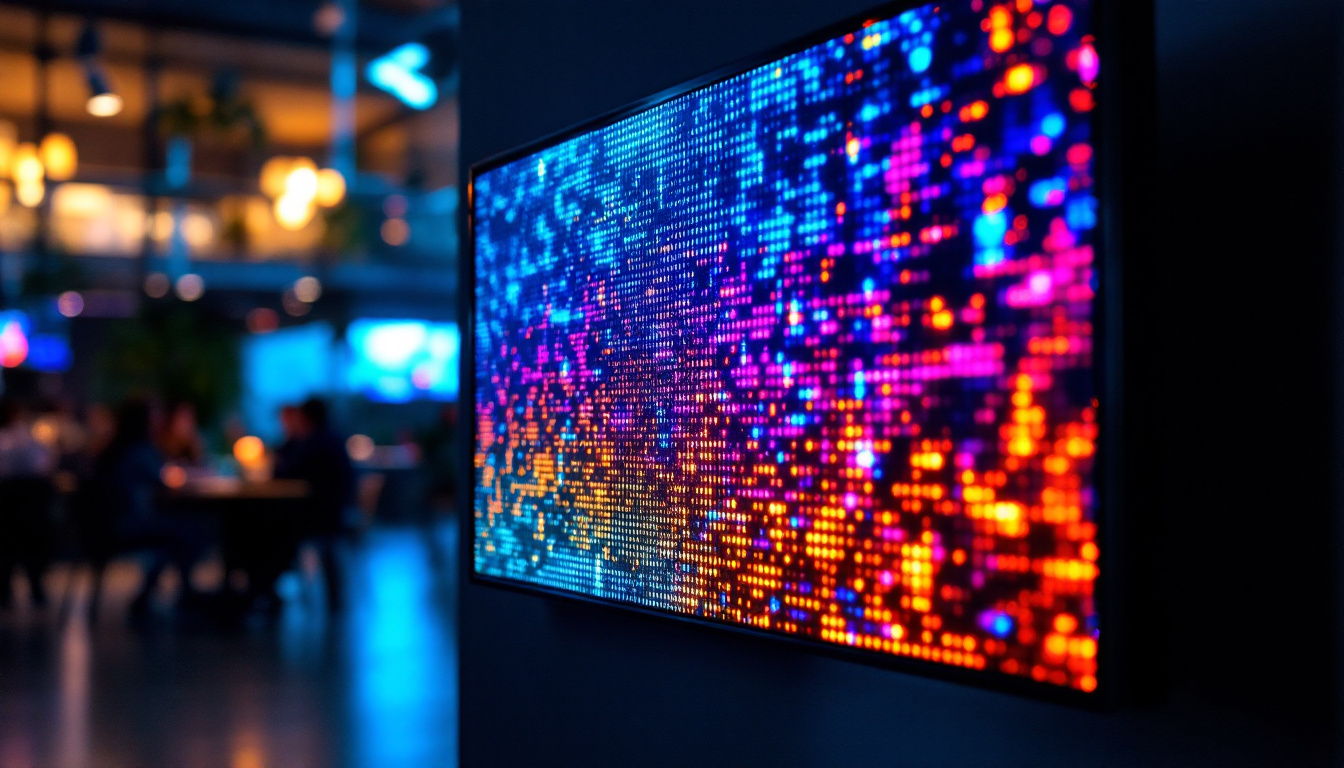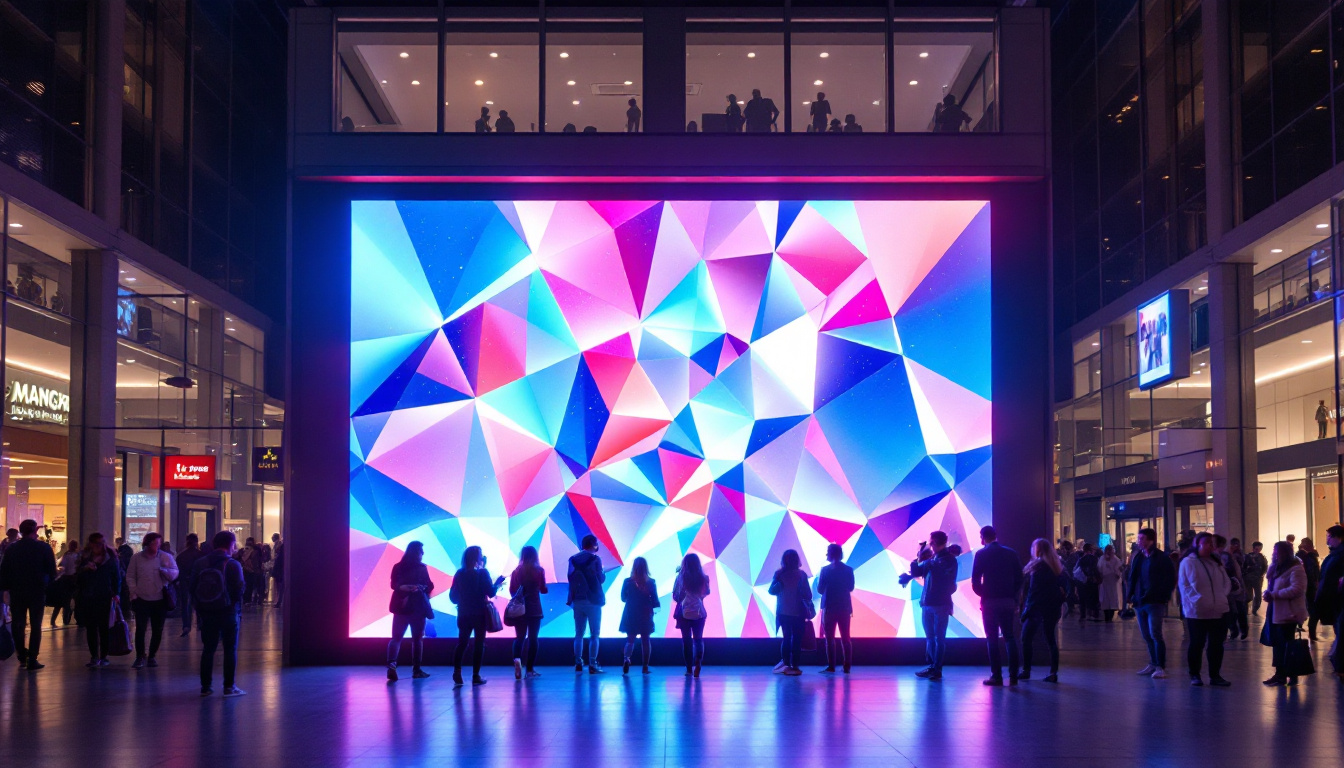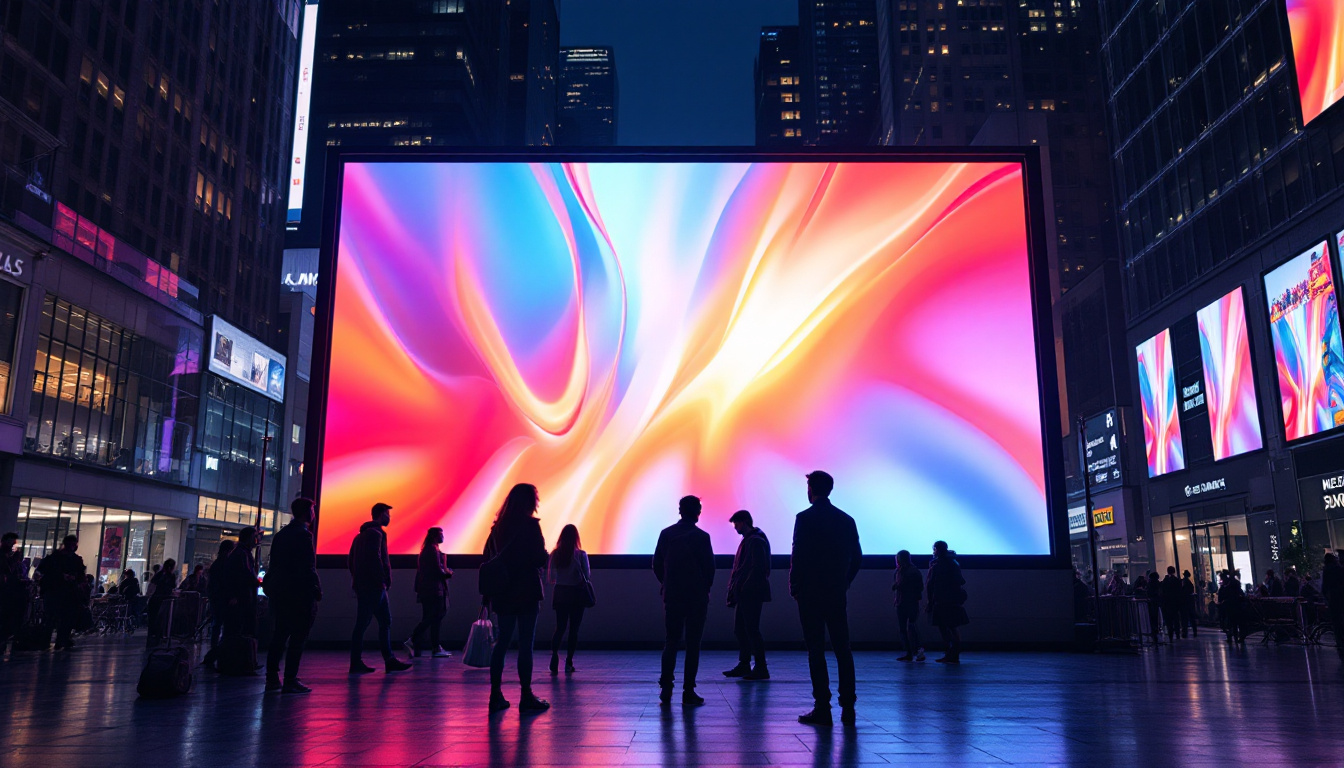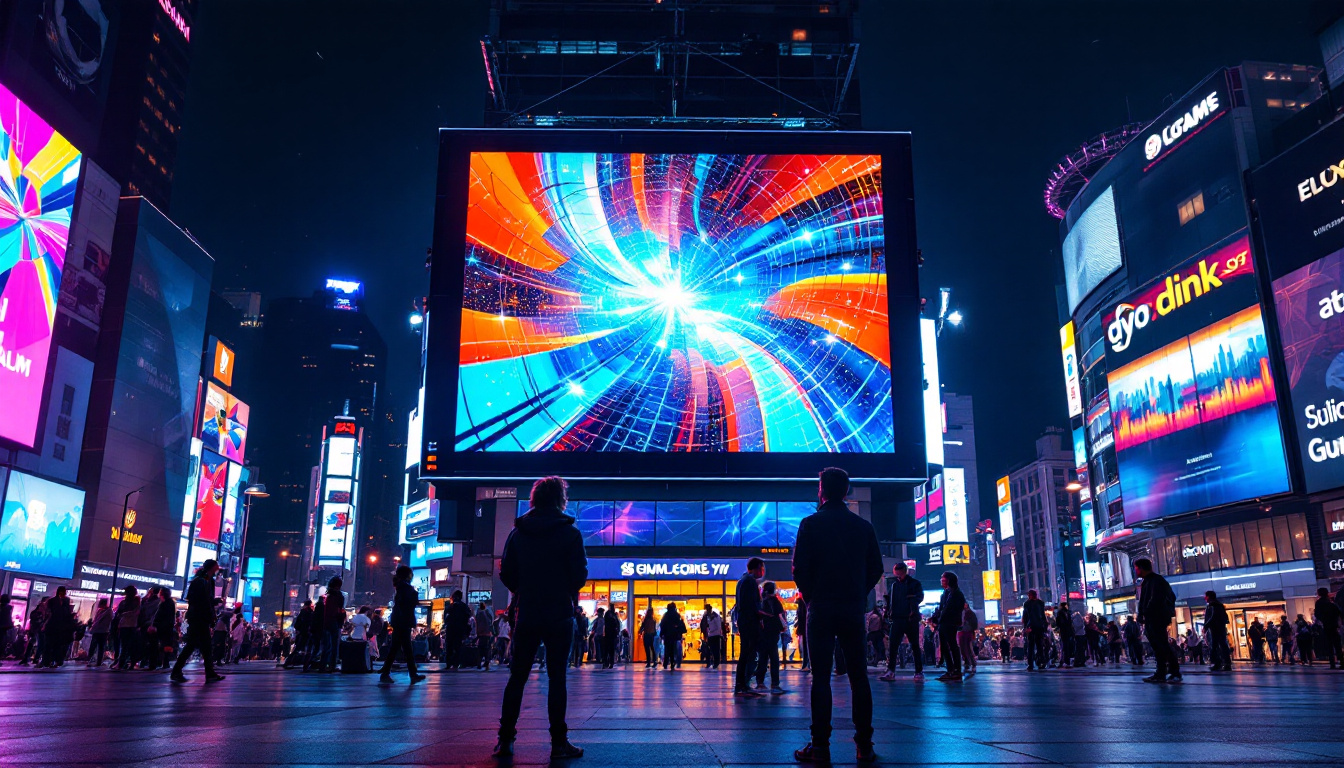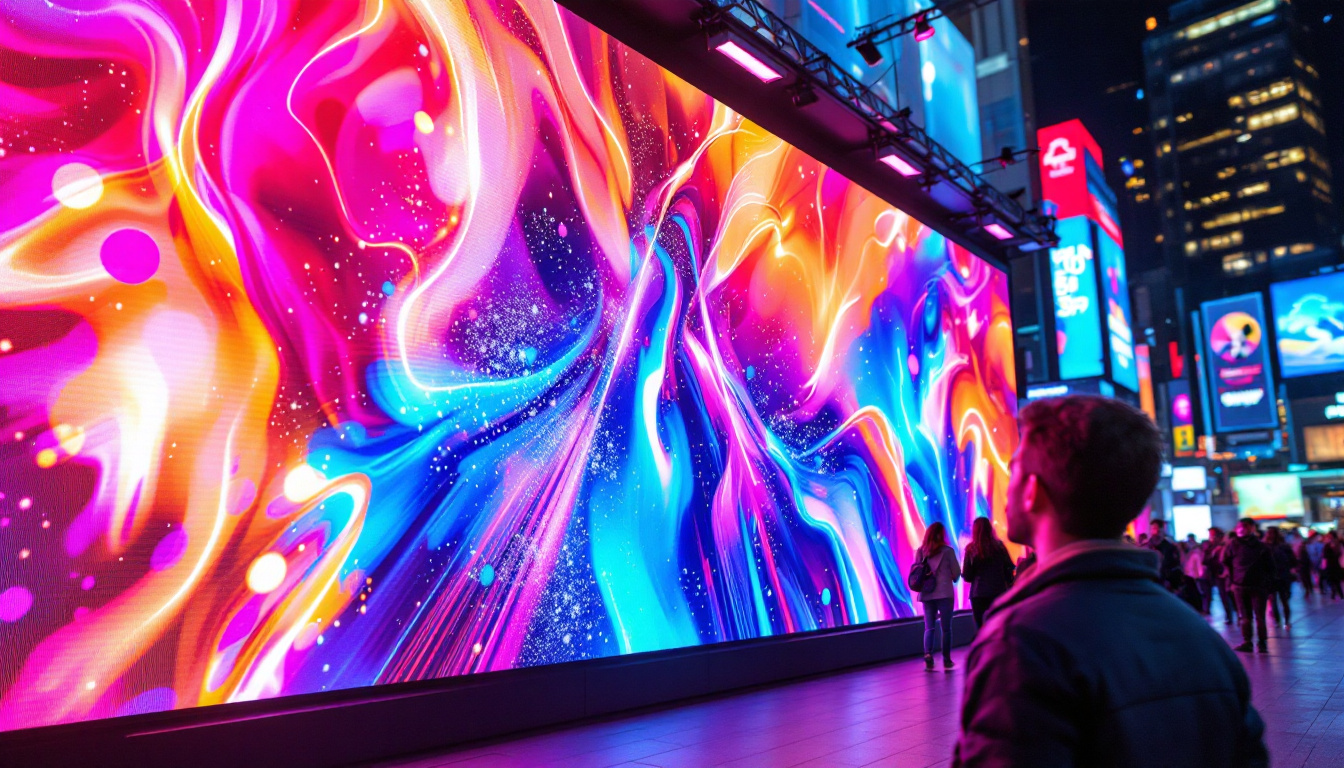In today’s fast-paced digital world, the demand for effective visual communication has led to the evolution of various types of digital displays. Among these, LED (Light Emitting Diode) displays have gained immense popularity due to their versatility, efficiency, and vibrant performance. This article will delve into the intricacies of LED displays, exploring their types, advantages, applications, and how they compare to other display technologies.
Understanding LED Displays
LED displays are a form of flat-panel display that utilizes light-emitting diodes to produce images. They are widely used in various applications ranging from televisions and computer monitors to large outdoor advertising billboards. The technology behind LED displays has transformed the way information is conveyed visually, offering brighter colors, higher contrast ratios, and energy efficiency. In recent years, the evolution of LED technology has also led to the development of flexible and curved displays, which enhance the viewing experience by allowing for unique designs and configurations that were previously unattainable.
How LED Displays Work
At the core of LED display technology is the light-emitting diode, a semiconductor device that emits light when an electric current passes through it. Each pixel in an LED display is made up of red, green, and blue (RGB) diodes, which combine to create a full spectrum of colors. This RGB configuration allows for precise color reproduction, making LED displays particularly appealing for applications requiring high visual fidelity. Additionally, advancements in LED technology have introduced features such as local dimming and HDR (High Dynamic Range), which further enhance the depth and richness of the images displayed.
LED displays can be categorized into two main types: direct view and backlit. Direct view LED displays consist of individual LED modules that form the entire screen, while backlit LED displays use LEDs to illuminate an LCD panel from behind. Each type has its unique advantages and is suited for different applications. For instance, direct view displays are often preferred for large-scale installations due to their ability to create seamless images without bezels, while backlit displays are commonly found in consumer electronics for their cost-effectiveness and versatility.
Types of LED Displays
LED displays can be classified into various types based on their application, size, and technology. The most common types include:
- Indoor LED Displays: These displays are designed for use in enclosed spaces such as shopping malls, airports, and conference rooms. They typically have a higher pixel density, resulting in sharper images and text. Indoor displays are often used for presentations, advertising, and information dissemination, providing a dynamic way to engage audiences.
- Outdoor LED Displays: Built to withstand the elements, outdoor LED displays are used for billboards, stadiums, and public transport stations. They are brighter and more durable, ensuring visibility even in direct sunlight. These displays often incorporate weather-resistant features and can be programmed to show real-time information, such as news updates or traffic alerts, making them invaluable for public communication.
- Transparent LED Displays: These innovative displays allow for visibility through the screen while still showcasing vibrant images. They are often used in retail environments to create eye-catching advertising without obstructing views. Their unique design enables businesses to maintain an open feel in their storefronts while still delivering engaging content to passersby.
- Flexible LED Displays: A newer addition to the LED display family, flexible displays can be bent or shaped to fit various surfaces. This adaptability opens up new possibilities for creative installations, allowing for immersive experiences in art, retail, and event spaces.
Advantages of LED Displays
LED displays offer numerous advantages over traditional display technologies, making them a preferred choice in various industries. Here are some key benefits:
Energy Efficiency
One of the most significant advantages of LED displays is their energy efficiency. Compared to other display technologies, such as LCD and plasma, LED displays consume considerably less power. This not only reduces operational costs but also contributes to a lower carbon footprint, making them an environmentally friendly option. Furthermore, the reduced energy consumption can lead to significant savings over time, especially for businesses that rely heavily on digital signage or large video walls. As a result, many companies are increasingly adopting LED technology as part of their sustainability initiatives.
Brightness and Visibility
LED displays are known for their exceptional brightness levels, which make them suitable for both indoor and outdoor applications. The ability to produce vivid colors and high contrast ratios ensures that content remains visible even in challenging lighting conditions. This characteristic is particularly beneficial for advertising and public information displays. In addition, LED displays can be easily viewed from a distance, making them ideal for large venues such as stadiums, concerts, and trade shows. Their adaptability to various viewing angles also enhances the audience’s experience, ensuring that everyone can enjoy the content being presented, regardless of their position relative to the screen.
Longevity and Durability
LED technology is inherently robust, providing a longer lifespan compared to traditional displays. Most LED displays can last up to 100,000 hours, significantly reducing the need for frequent replacements. Additionally, outdoor LED displays are designed to withstand harsh weather conditions, making them a reliable choice for long-term use. This durability is complemented by their resistance to shock and vibration, which is particularly advantageous in dynamic environments. As a result, LED displays are often employed in transportation hubs, such as airports and train stations, where reliability and performance are paramount. The combination of longevity and resilience not only ensures consistent operation but also minimizes maintenance efforts, allowing businesses to focus on their core activities without the distraction of display-related issues.
Applications of LED Displays
The versatility of LED displays allows them to be utilized in a wide range of applications across various sectors. Here are some prominent examples:
Advertising and Marketing
LED displays have revolutionized the advertising industry, providing businesses with dynamic and eye-catching platforms to showcase their products and services. From large-scale billboards to digital signage in retail environments, LED technology enables advertisers to create engaging content that captures attention and drives consumer interest.
Entertainment and Events
In the entertainment sector, LED displays are widely used for concerts, festivals, and sporting events. Their ability to deliver high-quality visuals in large formats enhances the overall experience for audiences. Additionally, LED screens can be configured in various shapes and sizes, allowing for creative stage designs and immersive environments.
Transportation and Public Information
LED displays play a crucial role in transportation systems, providing real-time information to passengers. From train stations to airports, these displays convey essential updates regarding schedules, delays, and directions. Their visibility and reliability contribute to improved communication within public transportation networks.
Comparing LED Displays with Other Technologies
While LED displays are widely favored, it is essential to understand how they compare with other display technologies, such as LCD and OLED. Each technology has its strengths and weaknesses, making them suitable for different applications.
LED vs. LCD
LCD (Liquid Crystal Display) technology uses a backlight to illuminate the screen, whereas LED displays utilize individual diodes. This fundamental difference results in LED displays being brighter and more energy-efficient. Additionally, LED displays generally offer better color accuracy and contrast, making them ideal for applications where visual quality is paramount.
LED vs. OLED
OLED (Organic Light Emitting Diode) displays are known for their exceptional color reproduction and contrast ratios, as each pixel emits its own light. However, OLED technology can be more expensive and may suffer from burn-in issues over time. In contrast, LED displays are more durable and cost-effective, making them a popular choice for large-scale installations.
Future Trends in LED Display Technology
The LED display industry continues to evolve, with advancements in technology paving the way for exciting new possibilities. Some emerging trends include:
MicroLED Technology
MicroLED is an innovative display technology that utilizes microscopic LEDs to create high-resolution images. This technology promises to deliver even greater brightness, color accuracy, and energy efficiency compared to traditional LED displays. MicroLED displays are expected to play a significant role in the future of consumer electronics, particularly in televisions and mobile devices.
Flexible and Curved Displays
As design aesthetics become increasingly important, flexible and curved LED displays are gaining traction. These displays can be bent or shaped to fit various environments, allowing for creative installations in retail and entertainment spaces. The ability to create unique visual experiences will likely drive demand for these innovative solutions.
Integration with Smart Technology
With the rise of the Internet of Things (IoT), LED displays are becoming increasingly integrated with smart technology. This integration allows for real-time content updates, remote management, and enhanced interactivity. As businesses seek to engage consumers in new ways, smart LED displays will become a vital tool for communication and marketing.
Conclusion
LED displays have transformed the landscape of digital communication, offering a versatile and efficient solution for a wide range of applications. Their advantages in energy efficiency, brightness, and durability make them a preferred choice across various industries. As technology continues to advance, LED displays will undoubtedly play a crucial role in shaping the future of visual communication.
Understanding the different types of LED displays and their applications can help businesses and consumers make informed decisions when investing in digital display technology. Whether for advertising, entertainment, or public information, LED displays are poised to remain at the forefront of digital innovation.
Discover LumenMatrix’s Innovative LED Display Solutions
Ready to elevate your visual communication with cutting-edge LED display technology? Look no further than LumenMatrix, a pioneer in creating displays that bring your content to life. From vibrant Indoor LED Walls to robust Outdoor LED Displays, and from sleek LED Posters to dynamic Sports and Custom LED solutions, LumenMatrix offers a comprehensive range of products designed to captivate and engage your audience. Embrace the future of digital displays and check out LumenMatrix LED Display Solutions today to transform your space into a visual spectacle.

